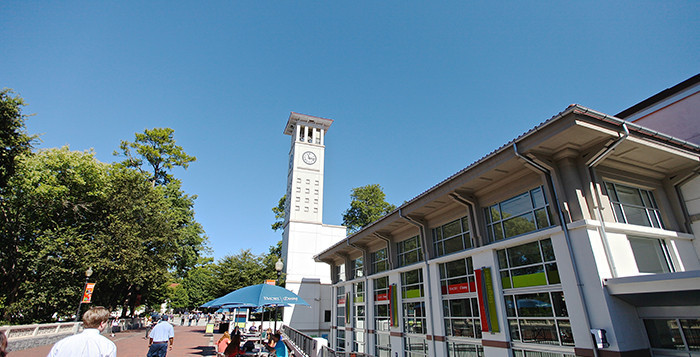Emory now uses 25 percent less energy, meeting part of a strategic plan set in 2005 one year earlier than anticipated.
Energy use is one of the University’s largest expenses, as the campus used nearly 300,000,000 kilo-watt hours of electricity every year and spent $24.8 million on utilities alone in 2005, according to a Dec. 4 press release. That same year, Emory vowed to reduce energy use from 217 thousand British thermal units (kBtu) to 162.7 kBtu over the next 10 years, according to the Emory Sustainability Initiative.
Emory still needs to meet other parts of its strategic plan, such as goals on reducing water usage and using more local and sustainable food, by 2015.
“The[se] are the accomplishments of the Emory community as a whole,” Ciannat Howett, director of Sustainability Initiatives, said. “Every person who made a more sustainable choice, to recycle waste or take the shuttle instead of a car, contributed to Emory achieving the exciting list of sustainability highlights for 2014.”
Along with this energy reduction, this year the initiative has led to a total of 25 LEED certified buildings on campus, grass-fed beef and humanely raised eggs in the dining halls and the elimination of Styrofoam products from the dining halls. Additionally, Emory joined the Atlanta Better Building Challenge, which works to reduce energy and water usage in buildings across Atlanta.
As the largest participant in the program, the University committed 6.5 million square feet of enrolled buildings to reduce energy and water by 20 percent by 2020, according to Howett.
Emory’s effort to promote commuter alternatives such as using the Cliff shuttles, carpooling, walking, biking or using MARTA buses, has reduced the petroleum usage from 10 percent since 2005.
Also, now, 50 percent of community members park on campus as more Emory Healthcare members, faculty and students use alternative forms of transportation.
In its final year, the initiative will continue work on its many other goals such as reducing water usage by 20 percent and recycling 65 percent of waste on campus, but also providing more courses on sustainability, according to initiative.
However, some goals seem more difficult to meet than others, including a goal to have 75 percent local and sustainable food, according to Howett.
“We will likely be at about 24 percent in our 2014 annual report numbers,” Howett said. “This falls short of our goal, but it is still an improvement since 2005 and near the 25 percent goal of the national Real Food Challenge.”
The 2005 University-wide strategic plan aimed to improve Emory’s “quality, distinction, the financial strength and resource stewardship,” President James W. Wagner wrote in his 2011 “Message From the President.” Wagner deemed sustainability a fundamental part of the mission to improve the “environmental, economic and social future of Emory,” according to Emory’s Sustainability Vision.
College senior Sally Yan, a former volunteer for the Emory Sustainability Initiative, said she chose Emory partly because of its focus on sustainability. “I am excited and proud, but not at all surprised, that Emory was able to reach its goal ahead of schedule.”
The initiative is currently in the middle of a strategic planning process to set goals for beyond 2015.
– By Sarah Husain, Contributing Writer






